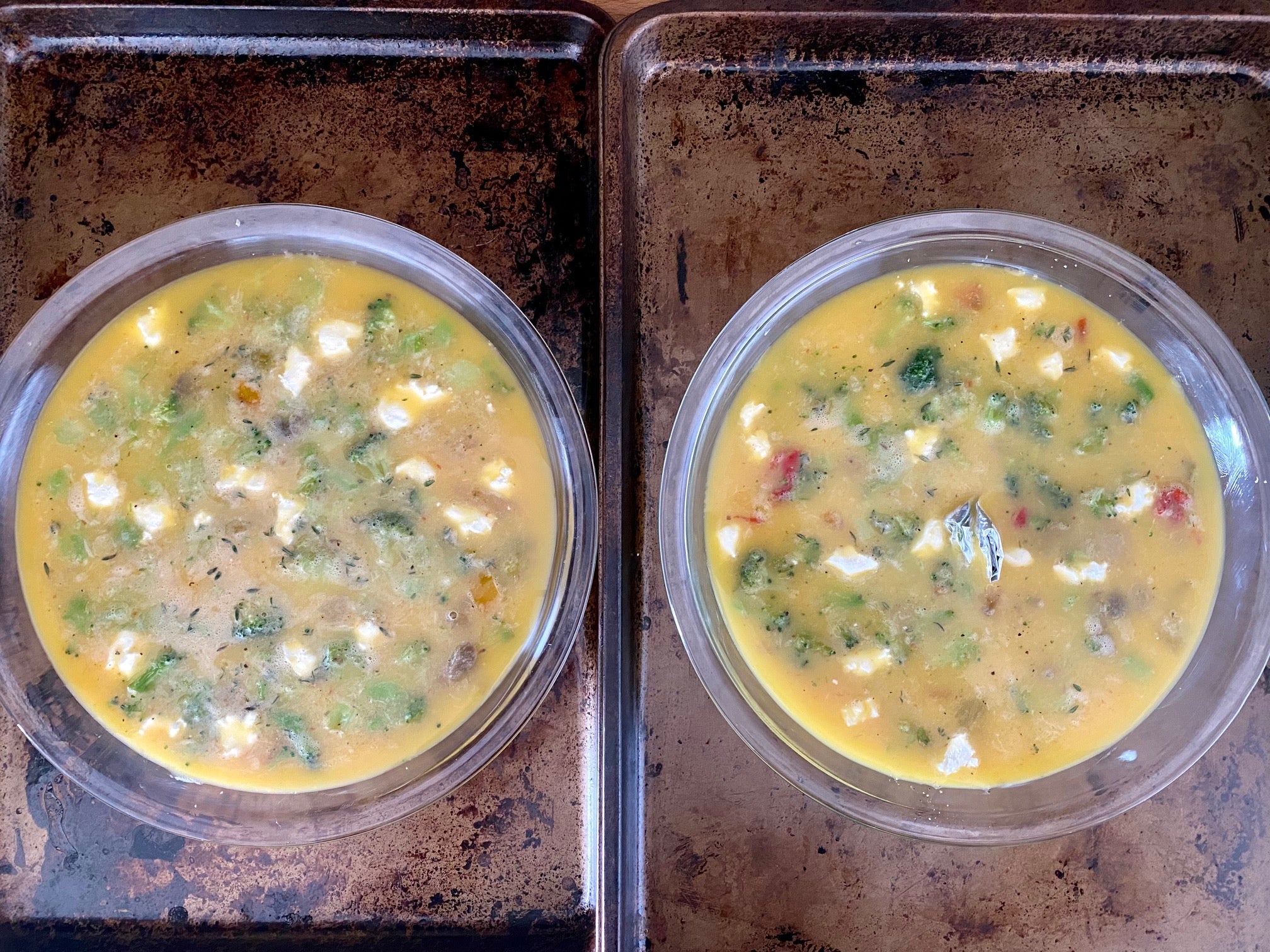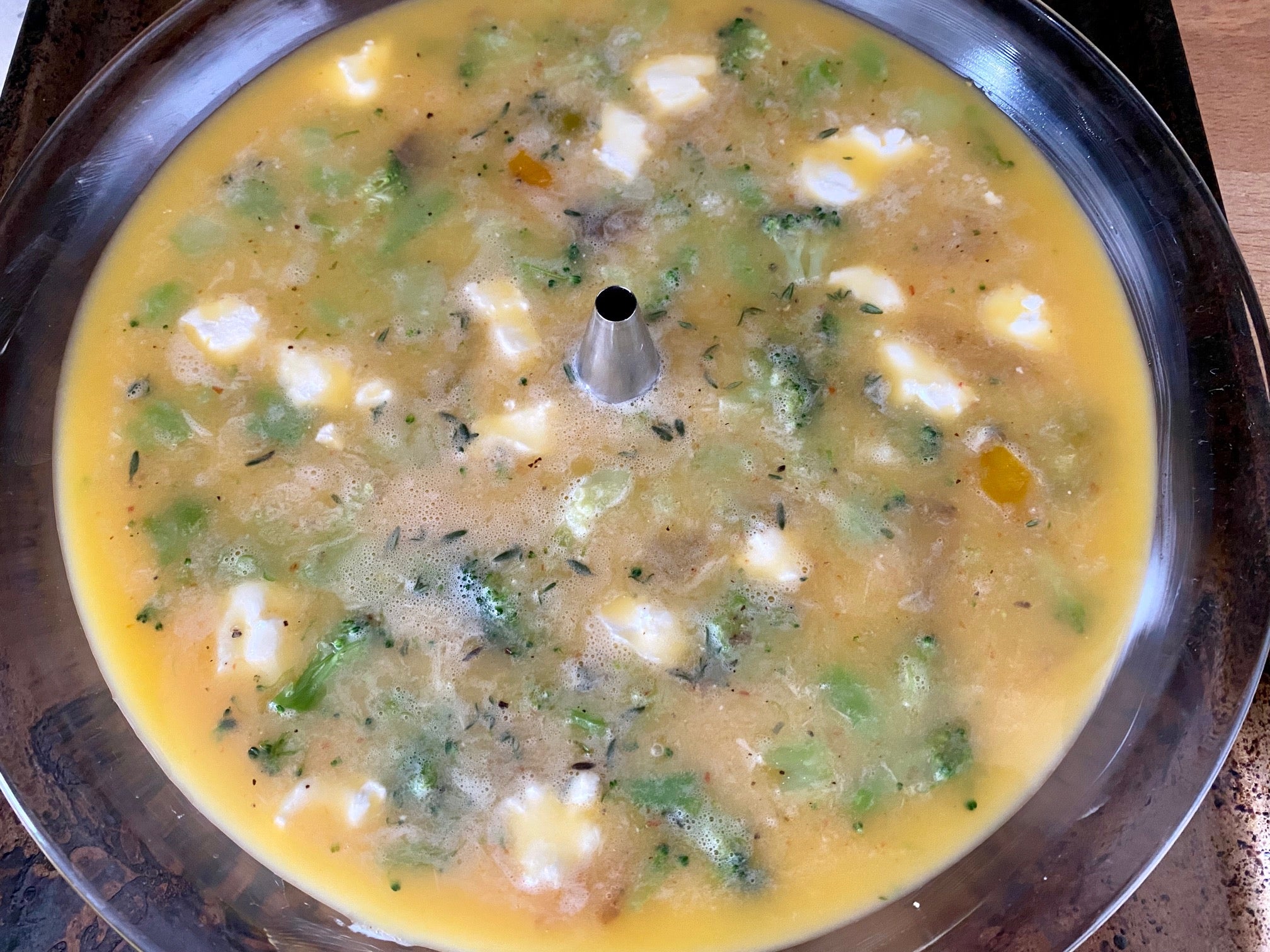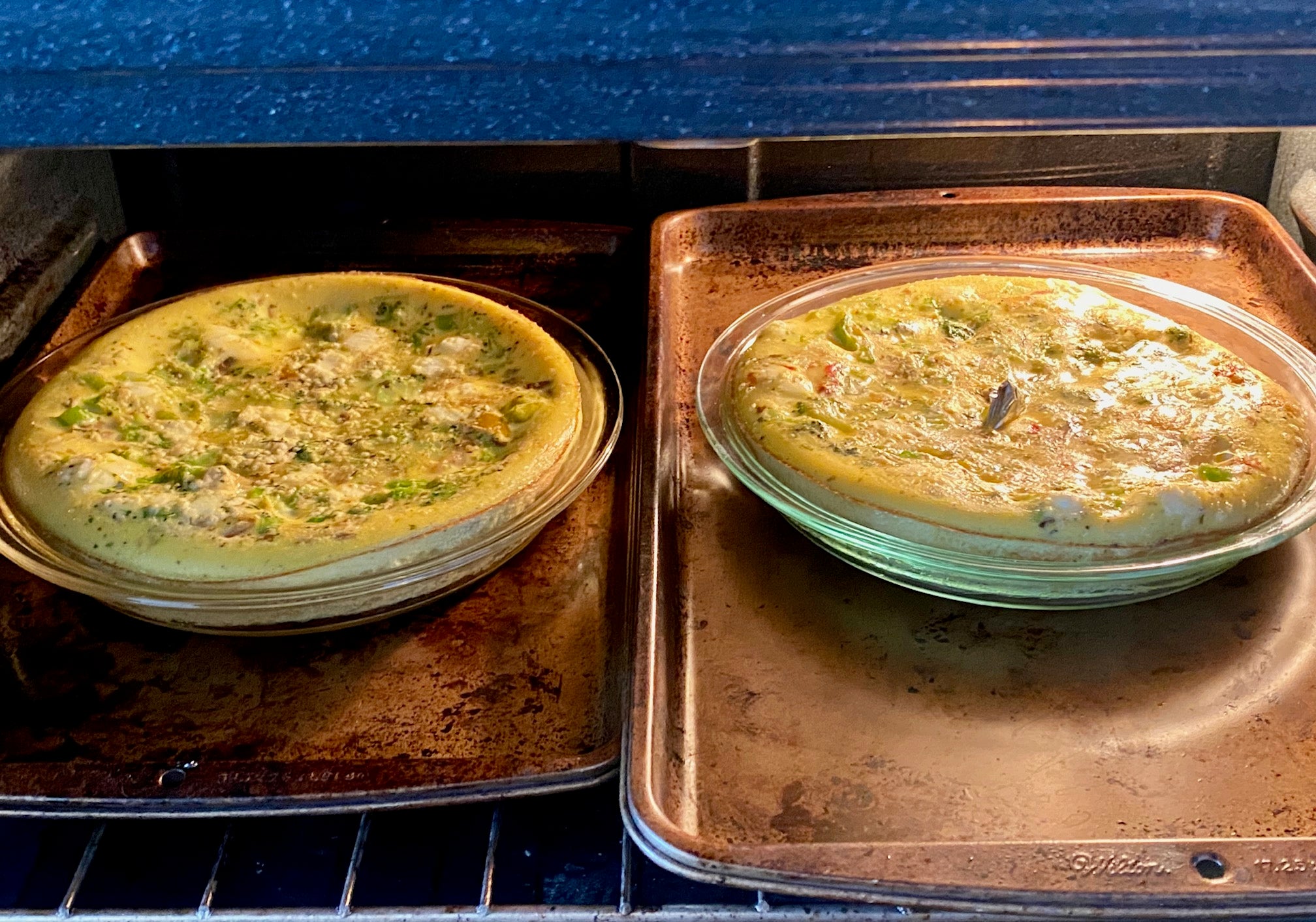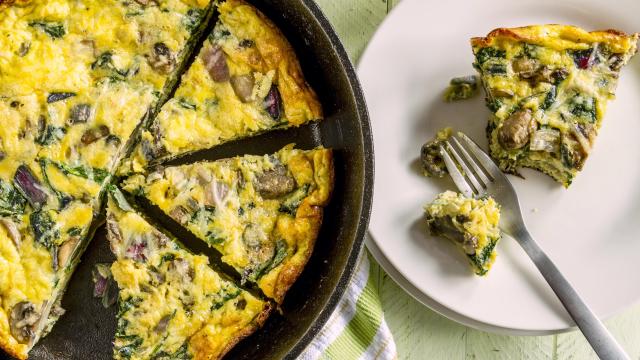Inevitably, almost every conversation I have with anyone I meet turns into a food conversation. Maybe 80% of those are about eggs. It wasn’t until a recent egg conversation with Mashable Editor-in-Chief Alesha Williams Boyd that I understood that not everyone likes their eggs custardy. Here I was, thinking most folks yearn for a French-style scramble, or a tender coddled egg with a runny yolk, but that’s just not so. The fully-set whites, non-runny-yolks-camp of egg lovers have textural needs too. (I get it. I can’t eat a sunny-side egg if the top whites are too snot-like.) But insisting on fully set eggs can lead to frittata trouble, and it can be hard to cook the centre completely without the outer edge taking on the consistency of a Goodyear tire. The solution: stick a piece of metal in your egg casserole.
It sounds dramatic but it really works. Typically, when you cook an egg-based dish, be it a crustless quiche, frittata, or bread pudding, the edges are directly in contact with the sides of the cooking vessel that are conducting the heat, so they come to temperature and cook long before the centre gets enough heat to fully set. Most recipe instructions and tutorials will instruct you to take out the dish when the centre is still jiggly, relying on carry-over cooking to finish the job. If you do this, you end up with a fully set edge, and a just set, silky, tender, custardy centre.
If you like a soft-cooked egg, you’re golden. But if that texture makes you queasy, you’re probably leaving it in the oven for another 10 minutes to cook through. Sadly, by the time the centre fully sets, the edge has already surpassed the egg’s finished cooking temperature of 62°C-70°C, and the edge’s protein bonds have tightened and squeezed out all of the moisture. That’s the rubbery texture we’re trying to avoid.
Putting a small, food-safe metal object in the centre of your egg dish will conduct heat down into the centre, adding a point of direct heat contact. The pool of eggs can now cook from the outside-in and the inside-out. The formerly last-to-finish centre will now cook at a similar rate as the outer ring. Not only does this result in more even cooking, but also cuts down the cooking time significantly — like, keep-you-on-your-toes fast — so make sure you check on the dish 10 minutes earlier than it’s normal bake time.

You can use any small food-safe metal object to do the job, but make sure it’s big enough to stick out a bit. You want to be able to easily pluck it out after it’s finished without harming the overall product. Try a small circular cookie cutter, a piping tip, or a folded piece of aluminium foil. When you take the dish out to cool, pluck it out. If you use a piping tip or cookie cutter, butter it before you put it in the egg dish so it doesn’t stick when you try to remove it. I didn’t butter the foil, however, and it came out easily after I loosened the egg around it with a paring knife. Be careful when removing the metal; it’ll be hot. A small mark on the surface is inevitable, and easy to cover up with a little garnish of chopped herbs or hot sauce. (Plus, if you’re not trying to impress anyone then who cares?)

Aluminium foil is cheap and works perfectly fine, but it did float around my crustless quiche a bit. I had to tap it back into the centre when I loaded the quiche into the oven, which wasn’t hard. Just to see if it could be an option, I set a large plain piping tip into the centre and that sat very nicely. The bottom is wider than the top and it doesn’t float, so if you have one of those, try that out.

To test the limits of this tip, I made two quiches: one with foil and one without. The quiche on the right (with the foil nugget) has an even consistency. The one on the left has lifted edges but a sunken, just-set centre. Even though the quiche on the right was more “done” than what I prefer (I enjoy custardy consistencies), it’s probably perfect for the fully-set egg types out there. You deserve to have exactly the kind of eggs you like, so go ahead and drop a piece of foil in your frittata and enjoy the fast, even cooking.

Leave a Reply
You must be logged in to post a comment.